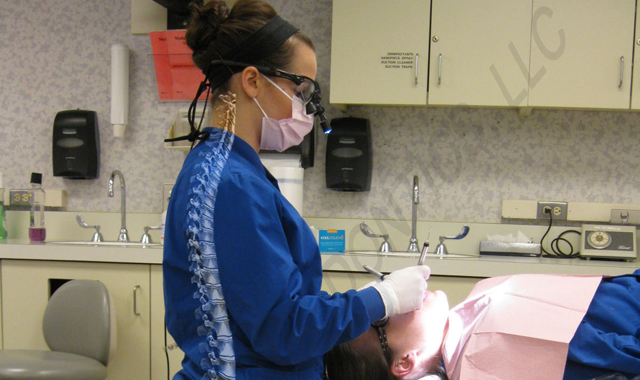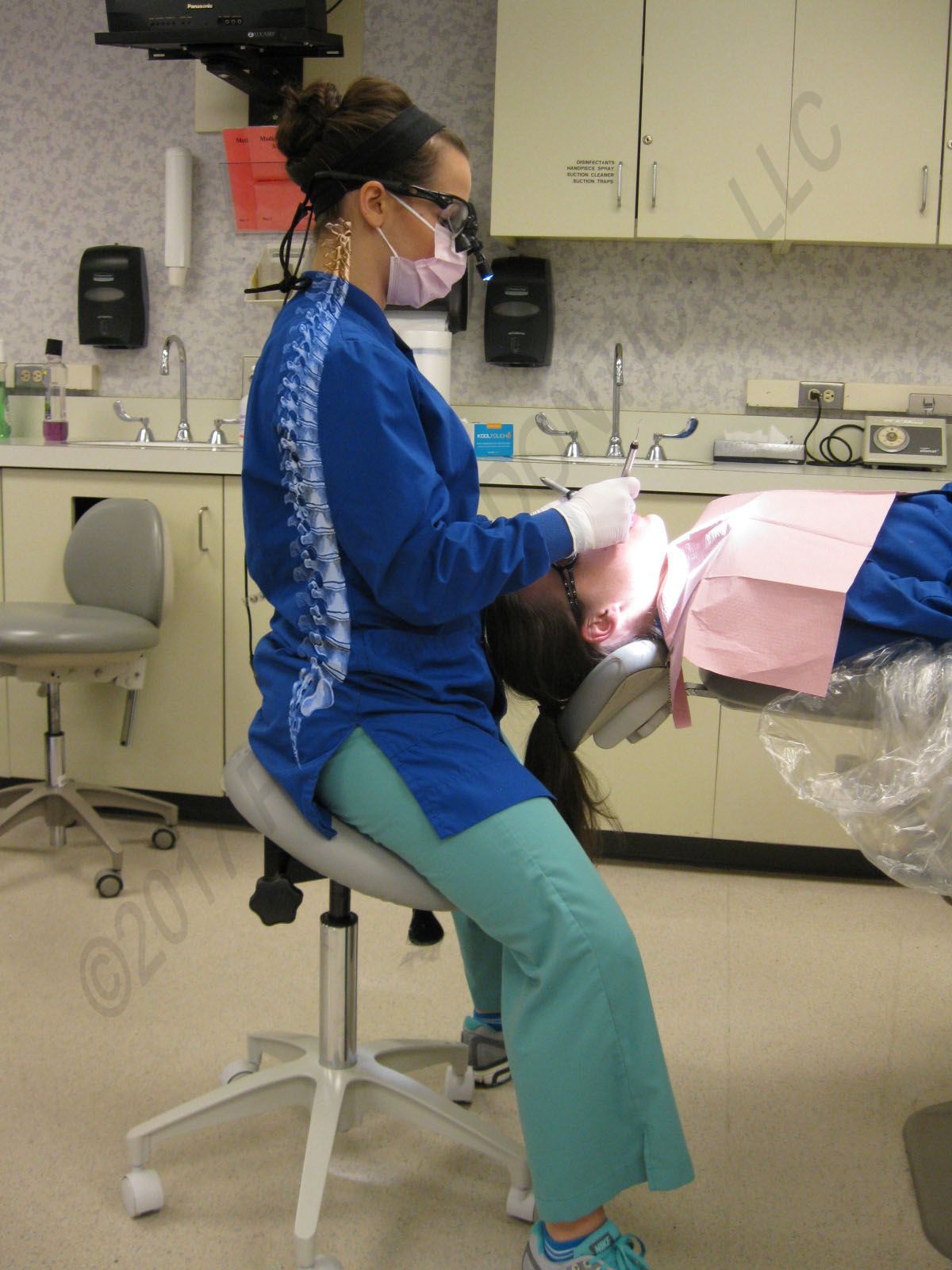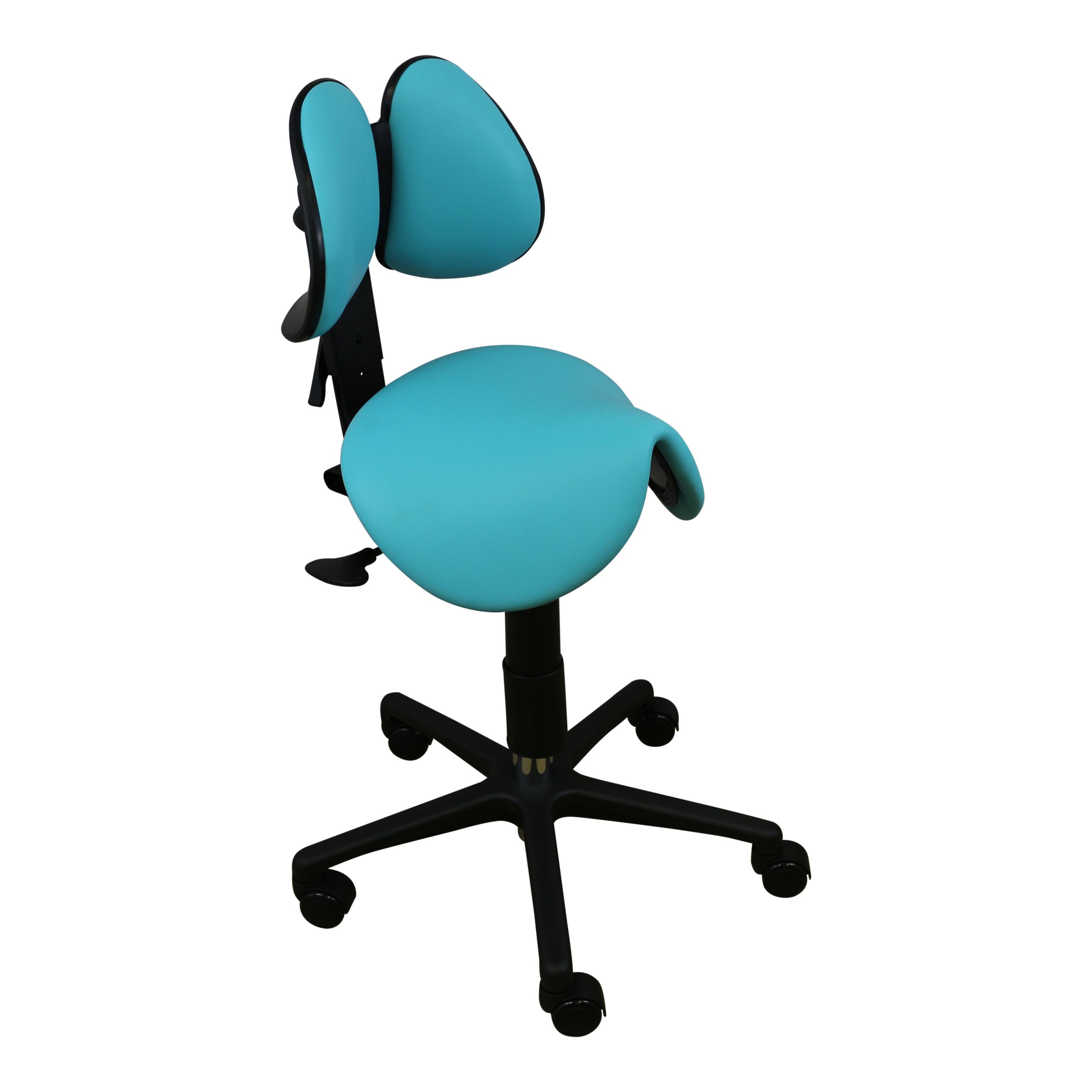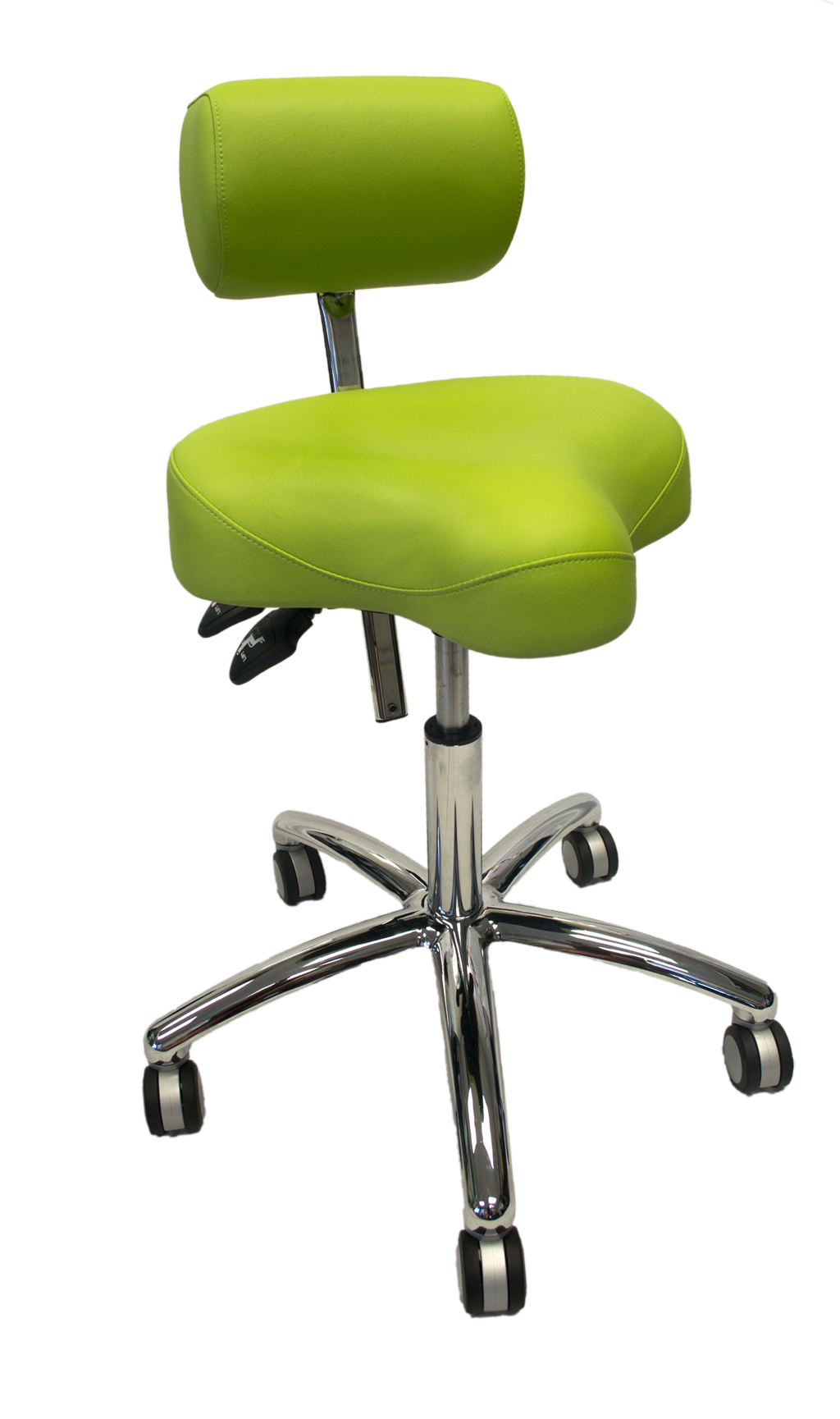The ergonomic benefits of saddle-style stools
Saddle up! Research has shown that a saddle-style stool could save your health-and your career.

Saddle-style stools are becoming increasingly popular in dentistry-and for good reason. The benefits of this positioning are numerous, and research supports the positive impact on the musculoskeletal system. For those unfamiliar with saddle-style stools, they may seem unconventional, if not radical, compared to traditional flat operator stools.
However, with the prevalence of back pain in dentistry unwavering over the past 50 years (around 65 percent), new, alternative methods for sitting and preventing back pain are gaining increased recognition.
A saddle-style stool promotes a neutral pelvic position, which supports the spine’s three natural curves in a balanced posture. The thighs slope steeply (45°) downward, so the seated position is halfway between sitting and standing (think ‘supported standing’). The resultant benefits to the musculoskeletal system and from an ergonomic standpoint when compared with conventional style seating are numerous.
Related reading: Are right angles... wrong? How you're sitting could be hurting your body
• The stool places you in a ‘tripod’ position with the hips slightly flexed and abducted (spread apart), which is the most stabilize position for the hip joint. (This is actually how babies with hip dysplasia are casted.) Only when the lower body is stable, can the upper body move with ease and precision.
• Dentists with short torsos who find they have to lift their arms to the sides when working, can easily lower the patient when seated on a saddle stool, allowing more relaxed neck and shoulder musculature.

• It is easier to maintain neutral spinal posture, since you are halfway between standing and sitting.
• Diaphragmatic breathing is improved.
• It is easier to gain close proximity to the patient when the thighs are steeply sloping downward, which minimizes excessive forward reaching.
• Moving the stool is easier, since it utilizes the larger thigh muscles instead of the calf muscles.
• The saddle stool facilitates correct movement at the hips, instead of bending at the waist.
• When the seat is adjusted flat, the saddle stool places the pelvis in a neutral position, which helps maintain the lumbar curve. Never tilt a saddle stool seat, as this can cause hyperlordosis and low back pain.
• When the lumbar curve is present, it facilitates a more neutral head posture. Conversely, when the lumbar curve flattens, the head moves forward!
• Its low profile makes the saddle stool ideal to access the 12 o’clock position in small, confined operatories.
• It is easier to go from sitting to standing position.
• The saddle stools activates the deep trunk stabilizing muscles, which have been shown to help prevent low back pain.
More from the author: The top exercises that can worsen dentists' health
Selection of saddle stools
Fig. 1

There are two styles of saddle stools on the market that allow this optimal ergonomic positioning. A true saddle stool (Fig. 1) and a saddle-style stool (Fig. 2). When considering a traditional saddle stool, select a saddle stool that is the right contour for your pelvis. A saddle that is too narrow for your pelvis can cause compression and be uncomfortable. Likewise, a saddle that is too wide for a smaller operator can cause uncomfortable splaying of the hips. Men should consider either a highly padded style saddle or a split seat saddle stool to decrease compression on the peritoneal area, or opt for the saddle-style stool to avoid compression altogether. The saddle-style stool has a flat triangle-shaped seat that keeps the pelvis in a neutral position, while the thighs slope steeply downward. This is a nice option for dentists who want to avoid compression in the genital area, yet glean the benefits of saddle stool positioning.
While the saddle stool decreases muscle activity in the lumbar musculature, it also increases activation of the abdominals. Addition of a backrest moderately reduces the abdominal activity, and should be considered by dentists.
Fig. 2

A saddle stool with telescoping armrests is one of the most beneficial ergonomic interventions I have come across in the operatory. I feel every dentist should at least trial a saddle stool with armrests and backrest in their operatory to see if they are comfortable with it. If you don’t like the armrests during the trial period, simply flip them out of the way. Keep in mind that the saddle stool utilizes some different muscles than you generally use in a typical workday and you may become a little sore in your hip adductors and trunk stabilizing muscles for the first few days. Therefore, you may not want to ‘ride’ your saddle for a full eight-hour day the first few days. Start with three to four hours, then work your way up to a full day. The saddle stool is just one of many ergonomic innovations paving the way to a longer and healthier career in dentistry! â
To receive a list of the author’s favorite saddle stools, please email info@posturedontics.com.
Product Bites – November 10, 2023
November 10th 2023The weekly new products podcast from Dental Products Report is back. With a quick look at all of the newest dental product launches, Product Bites makes sure you don't miss the next innovation for your practice. This week's Product Bites podcast features new launches from Amann Girrbach, DMG, Pac-Dent, and ASI Dental Specialties. [4 Minutes]